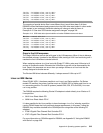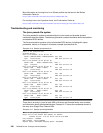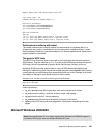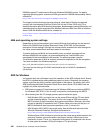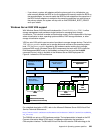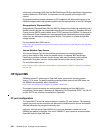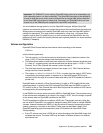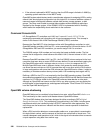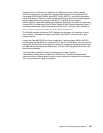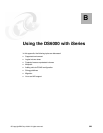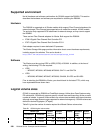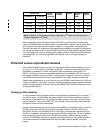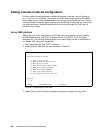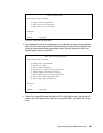Appendix A. Operating systems specifics 327
However, there is no forced error indicator in the SCSI architecture, and the revector
operation is nonatomic. As a substitute, the OpenVMS shadow driver exploits the SCSI
commands READ LONG (READL) and WRITE LONG (WRITEL), optionally supported by
some SCSI devices. These I/O functions allow data blocks to be read and written together
with their disk device error correction code (ECC). If the SCSI device supports
READL/WRITEL, OpenVMS shadowing emulates the DSA forced error with an intentionally
incorrect ECC. For details see
Scott H. Davis, Design of VMS Volume Shadowing Phase II —
Host-based Shadowing, Digital Technical Journal Vol. 3 No. 3, Summer 1991
, archived at:
http://research.compaq.com/wrl/DECarchives/DTJ/DTJ301/DTJ301SC.TXT
The DS6000 provides volumes as SCSI-3 devices and thus does not implement a forced
error indicator. It also does not support the READL and WRITEL command set for data
integrity reasons.
Usually the OpenVMS SCSI Port Driver recognizes if a device supports READL/WRITEL,
and the driver sets the NOFE (no forced error) bit in the Unit Control Block. You can verify this
setting with the SDA utility: After starting the utility with the
analyze/system command, enter
the
show device command at the SDA prompt. Then the NOFE flag should be shown in the
device’s characteristics.
The OpenVMS command for mounting shadow sets provides a qualifier
/override=no_forced_error to support non-DSA devices. To avoid possible problems
(performance loss, unexpected error counts, or even removal of members from the shadow
set), we recommend you apply this qualifier.



